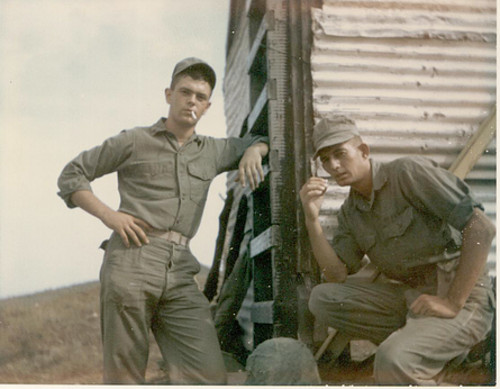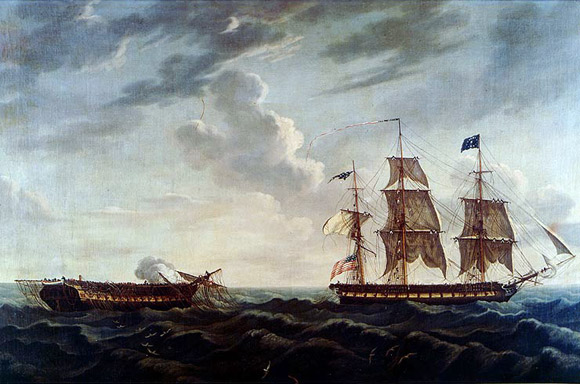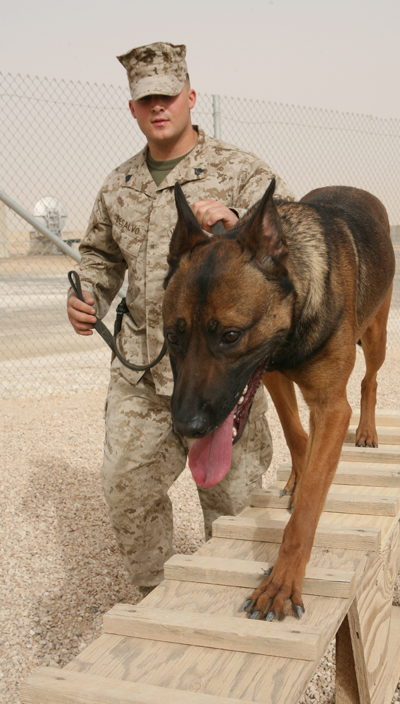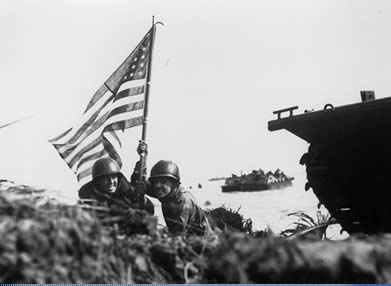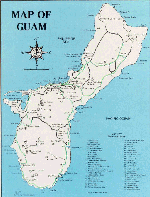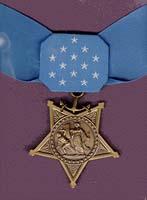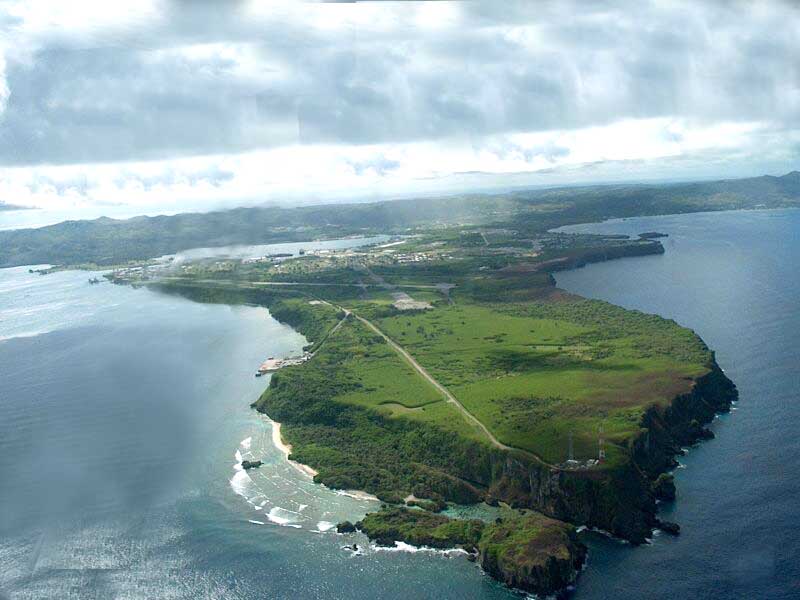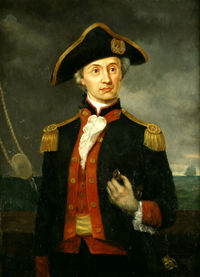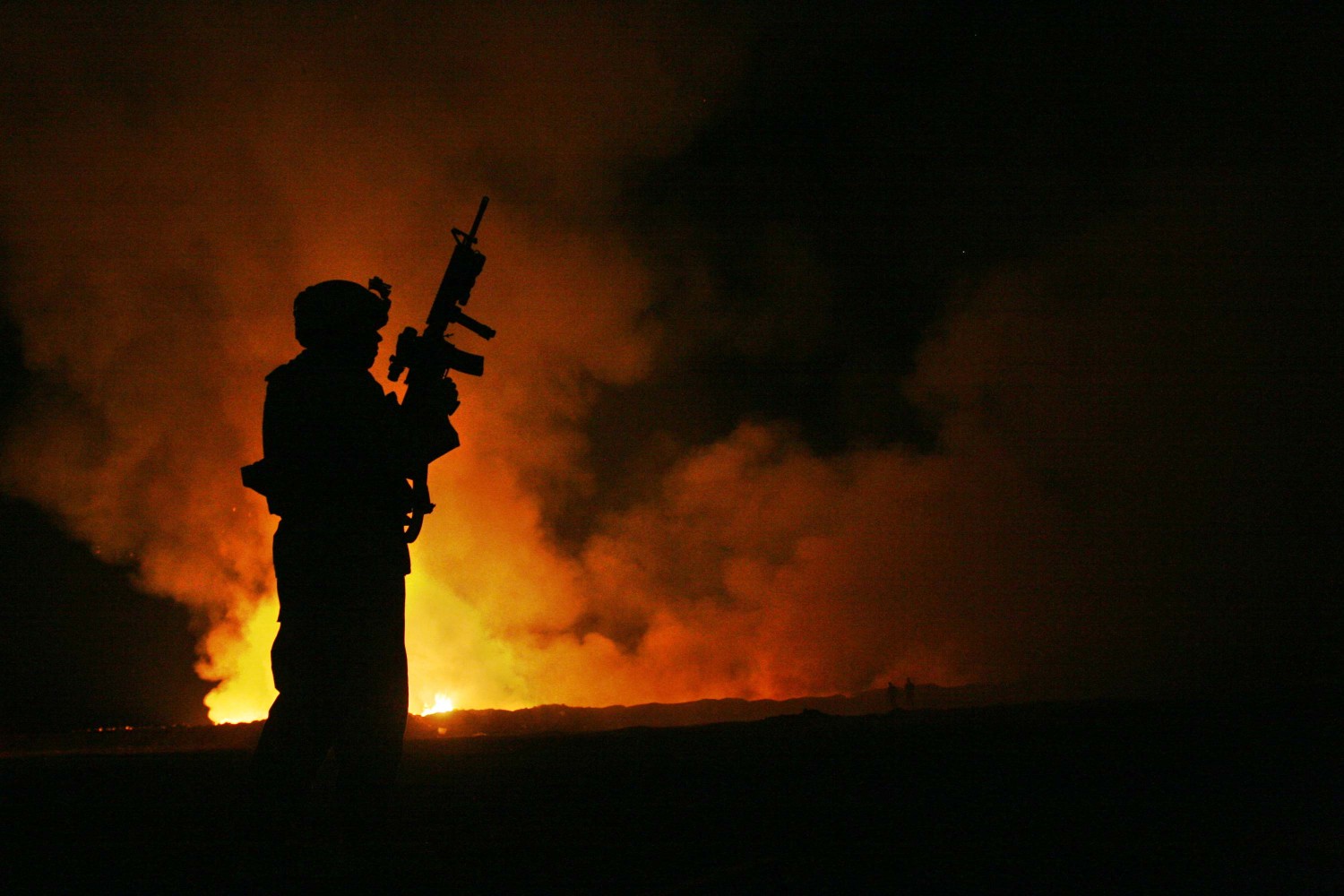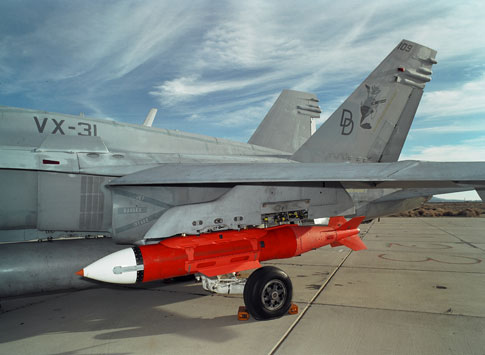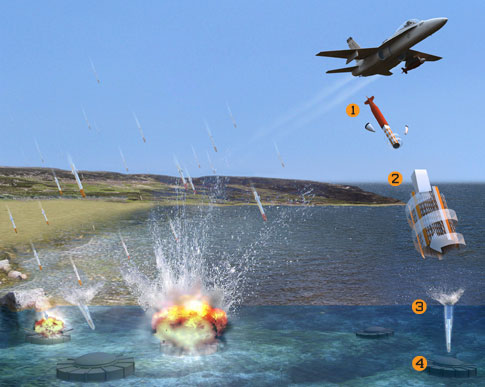It was a typical muggy, sunny day in the summer in Mississippi: August 25th, 1979. Ross Perot was there, Admiral Hayward, the Chief of Naval Operations was the speaker. They were there to honor their Naval Academy classmate.
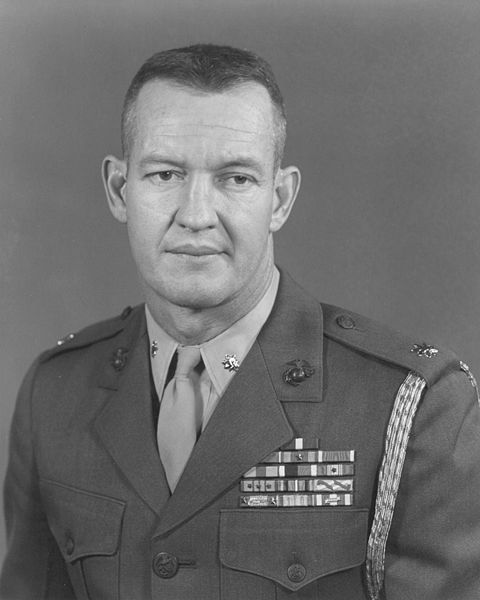
Lt Col William G. Leftwich, Jr., USMC, Class of 1953His widow, since remarried, and his two sons attended. One was by then a Cadet at VMI, The other in high school.Why was a modern destroyer named for this man? Because he displayed gallantry in battle and died while flying to the aid of his trapped Recon team in South Vietnam.
From HQ Marine Corps website:
Lieutenant Colonel William G. Leftwich, Jr., was commissioned a Marine Second Lieutenant on June 5, 1953, upon graduation from the United States Naval Academy. As Brigade Captain during his senior year at the Naval Academy, he was commended at graduation for exemplary officer-like qualities, which contributed… “to the development of naval spirit and loyalty within the Brigade.â€
Lieutenant Colonel Leftwich completed The Basic School in January 1954, and later served as a rifle platoon commander with the 2dMarine Division at Camp Lejeune, North Carolina. During 1955-56 he served with the 3d Marine Division in Okinawa. On his return to the United States, he was stationed at Camp Pendleton, California, where he was promoted to Captain in July 1957. He began a 3-year assignment at the Naval Academy, serving as a company officer. An excellent athlete, he performed collateral duties as assistant varsity tennis coach and battalion football coach.
In 1960, he rejoined the 2d Marine Division, serving as a company commander until 1962, when he was named aide-de-camp to the Commanding General. In June 1963, he was assigned as aide to the Commandant, Marine Corps Schools, Quantico, Virginia. He reported for duty in Vietnam in January 1965, as Assistant Senior Advisor to the Vietnamese Marine Brigade.
Lieutenant Colonel Leftwich participated in 27 major operations against the Viet Cong in the central highlands of Vietnam, and spent more than 300 days in the field. He was wounded in the battle of Hoai An, March 9, 1965, and in addition to receiving the Purple Heart, was awarded the Navy Cross for extraordinary heroism. According to his citation, he “…played a major part in all phases of the successful relief of the village of Hoai An which was under heavy enemy attack by two Viet Cong battalions…. By his own personal example…, he led the attack…. Despite injuries by enemy machine gun bullets in the back, cheek, and nose, he went to the aid of a mortally wounded comrade… and delayed his own evacuation until he could call for additional air strikes and brief the task force commander of the situation.â€
Upon his return to the United States in January 1966, he served as an instructor at The Basic School. He completed the Command and Staff College in June 1967, and was named to the school’s honor list. Assigned to Headquarters, U.S. Marine Corps, he was promoted to Lieutenant Colonel in November 1967, while serving as a systems analyst with the Manpower Management Information Branch, G-1 Division.
In 1968, Lieutenant Colonel Leftwich was selected by the Under Secretary of the Navy to be his special assistant and Marine Corps aide. He served in this capacity under the Honorable Charles F. Baird, and Mr. Baird’s successor as Under Secretary of the Navy, the Honorable John W. Warner.
In April 1970, he began his second tour of duty in Vietnam, serving initially as an infantry battalion commander with the 2d Battalion, 1st Marines. On June 30, he assumed duty as the Commanding Officer of the 1st Reconnaissance Battalion, 1st Marine Division (Reinforced).
On November 18, 1970, Lieutenant Colonel Leftwich was, per his practice of accompanying every emergency extraction called for by his reconnaissance teams, serving as senior “extract officer†for such a mission on the day of his death. The team had incurred casualties and requested an emergency extraction from enemy-infested territory, in an area being enveloped by dense fog. The team was extracted under Lieutenant Colonel Leftwich’s personal supervision. As the helicopter began it’s ascent, it crashed into a mountainside in enemy territory, killing all aboard.
Lieutenant Colonel Leftwich’s medals and awards include: the Navy Cross, the Silver Star (posthumous), the Legion of Merit with Combat “V†and two gold stars, the Meritorious Service Medal, the Air Medal with one gold star, the Purple Heart with two gold stars, and various personal awards from the Republic of Vietnam.
The memory of Lt Col Leftwich lives on in the form of an annual award, the Leftwich Trophy:

The Marine Corps Association is grateful for the generous support of the H. Ross Perot Foundation for providing the endowment that supports the annual presentation of the Leftwich Trophy. The trophy is rendered in bronze and depicts a Viet Nam era Marine Officer aggressively leading from the front which epitomizes the character of the award winner each year.
The Leftwich Trophy is intended to recognize active duty captains in the ground combat arms community, holding company or battery command who clearly and dramatically demonstrate the ideals of courage, resourcefulness, perseverance and concern for the well being of our Corps and it’s enlisted Marines. For the first time in the history of the award, which spans back to 1979, this year’s award is presented posthumously. Captain John W. Maloney, died in combat operations in Iraq after being recommended for the award.
The Award is provided through a foundation, which was established by H. Ross Perot who was a Naval Academy roommate of Lt Col William Leftwich, for whom the trophy is named.
The 2005 award of the Leftwich Trohpy went to CAPT William Maloney, USMC.
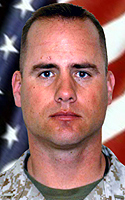
From the Military Times:
Leftwich Trophy awarded posthumously
By Christian Lowe
Times staff writer
For the first time in the award’s 27-year history, the Marine Corps has bestowed the prestigious Leftwich Trophy for Outstanding Leadership to an officer who died in combat.
Capt. John W. Maloney was killed June 16, 2005, when his Humvee was destroyed by a “massive bomb†as he led his infantrymen from the Camp Pendleton, Calif.-based Charlie Company, 1st Battalion, 5th Marines, out of an ambush in a small town south of Ramadi, Iraq, according to his nomination.
Maloney assumed command of Charlie Company, 1st Battalion, 5th Marines in July 2004.
“There are few officers who accomplish so much in such a short time in command,†wrote 1/5’s former commander, Lt. Col. Eric Smith. “This is simply a reflection of the efforts and abilities of an officer who, in my opinion, was not only made of the same stuff as Lt. Col. Leftwich, but who similarly sacrificed his life for his Marines.â€
The Corps cited Maloney as the 2005 recipient of the Leftwich Trophy in an April 4 Corps-wide message, AlMar 015/06.
First awarded in June 1979 to Capt. Clyde S. Brinkley Jr., the Leftwich Trophy is intended to recognize active-duty captains in the ground combat-arms community holding company or battery command who “clearly and dramatically demonstrate the ideals of courage, resourcefulness, perseverance and concern for the well-being of our Corps and its enlisted Marines,†according to the criteria for the award.
The award is provided through a foundation established by H. Ross Perot, a Naval Academy roommate of Lt. Col. William Leftwich, for whom the trophy is named.
Shortly after taking command of 1st Reconnaissance Battalion in Vietnam, Leftwich died in a helicopter crash during a Nov. 18, 1970, emergency extraction of his men from enemy-infested territory.
Maloney’s company was posted at one of the hottest combat outposts in Ramadi, capital of the volatile Anbar province in western Iraq, a notorious Sunni stronghold. The government center outpost in the heart of the city is the site of frequent insurgent attacks from rocket-propelled grenades, machine guns and mortar fire.
The parallels with Maloney’s actions and those of the award’s namesake were not lost on Smith when he recommended the fallen Maloney for the Leftwich.
“Were we to replace a hot [landing zone] and a UH-1 [Huey] helicopter with an IED-infested sector of town and an armored Humvee, there would be no daylight between what these two great leaders gave to our Corps,†he wrote.
Awarding the trophy posthumously was somewhat controversial, Marine officials said, though rules governing the award do not rule out giving the trophy — which depicts a Vietnam-era Marine officer clutching an M16 in one hand, waving his men forward with the other — to a deceased Marine.
Smith argued in his nomination for Maloney that the Jan. 20 award of a Bronze Star with a combat “V†was done “to pay him tribute†for his heroism in Iraq.
“The commandant came back and asked us, ‘Are you doing this because the Marine was killed in action or was he the best guy?’†said Gene Benson, Leftwich Trophy coordinator with the Corps’ Plans, Policy and Operations office, in an April 24 interview. “And he was the best guy regardless if he had been [killed in action] or not. So it just turned out that way.â€
Benson said plans are in the works to present the Leftwich Trophy to Maloney’s wife, Michelle, at the Marine Corps Association-sponsored Ground Awards Dinner in Arlington, Va., on Sept. 21.
Last I recall, his son who graduated from the Naval Academy had been selected to Commander.
The ship? I am a Plank Owner, and have often blogged here on some of the shipboard life I experienced there:
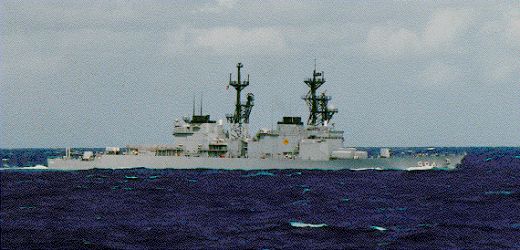
The 22nd of 31 hulls, LEFTWICH began service stationed in San Diego, and later was shifted to her homeport of Pearl Harbor. She was one of the first of the SPRUANCE Class ships to be fitted with TOMAHAWK cruise missiles, with two armored box launchers (4 weapons each) on her foc’sle.
